██╗ ██╗ ██╗ ██████╗ ██║ ██║ ██║ ██╔══██╗ ███████║████████╗██║ ██║ ██╔══██║██╔═██╔═╝██║ ██║ ██║ ██║██████║ ██████╔╝ ╚═╝ ╚═╝╚═════╝ ╚═════╝. . . . . . . . . . . . . . . . /. . . . . . . + . / . . . . . / . . * . . . * . . . . . . . + . . . . . . . . . . . . + . ___/\_._/~~\_...__/\__.._ . _.--' `--./\ * . /~~\/~\ `-/~\_ . .-' H&D Bulletin #7 `-/\_ _/\.-' Launch at het Fort van Sjakoo __/~\/\ 𐔌 ﹒ ⋆ ꩜ 20 June 2025⋆ 𓂃 ₊ ⊹_ _ __ ___.--'_`. .'_`--.___ __ ( _`.'. - 'o` ) ( 'o` - .`.'_ ) _\.'_' _.-' `-._ `_`./_ ( \`. ) //\` '/\\ ( .'/ ) \_`-'`---'\\__, ,__//`---'`-'_/ \` `-\ /-' '/ ` '
Slow-motion attunement
The H&D Bulletin is an occasional publication that culminates practical and reflective articles, conversations, scripts and manuals, experimental, poetic, visual, or otherwise speculative contributions from H&D coop members, critical friends, guests, and participants of our activities. It is published on the H&D website, and the H&D mailing list, and distributed via our social media channels. Printed versions are distributed through the H&D network whenever there is an opportunity. This edition of the H&D bulletin was assembled, edited and designed using Octomode. In the small reflection on “Octomode & Learning Palestine” you can read more about some exciting developments of this open-source web-to-print publishing tool.
Currently, H&D practices a form of idleness, an attunement to a new economic reality. In December of 2024 we received the news that we wouldn’t receive funding for our activities in 2025-2026. H&D activities have been funded to a large extend by the Creative Industries Funds since 2015. Staying true to experimentation and self-organization in non-hierarchical, equitable and caring ways, costs time and energy. Rather than rushing into another fund-raising trajectory, we decided to take a breather, to take care of ourselves, individually and collectively, and revisit the core of H&D’s collective practice. We are in the process of reorienting and navigating what this new situation means for our H&D, our organizational structure, and how to engage with changing demands and political landscapes, how to bounce back, how to organise in different ways/forms/shapes that align with our values.
We are seeking spaces to think about ways of continuing and growing as a community without growing as an institution. We are looking for new contexts to engage more deeply and reflect on how to sustain ourselves ‘alternatively’. We cherish the ‘inefficiency’ of our ‘self-organization,’ – the slow and sometimes ruptured motions of tools and infrastructures and the relationships we build through them. Collective organizing may confront expectations of a productive and rewarding process as it resists linearity and progress-oriented understandings. Yet, we argue it is precisely through the slowness that an organization (including its infrastructural workings) can be questioned conceptually, technically, ethically and not necessarily conclusively.
In order to do so we decided to take a hiatus this year from organizing the Summer Camp, and take more time for concocting a program for next year. So there will be no HDSC2025 while we are finding other means of self-organizing! Nonetheless H&D remains active, we have several ongoing collaborations and are open to new ones, so reach out to us!
This bulletin marks the (momentary and not conclusive) end of a series of publishing experiments, gathering thoughts and processes from recent collaborations, it serves as a time stamp, surely we will be back with some more printed matters in the future.
𐔌 ﹒ ⋆ ꩜ ⋆ 𓂃 ₊ ⊹
Criptastic Postscript
Two weeks from now, Pernilla, Anja, Ren and Iz met in MELTs Berlin studio to develop a workshop on crip time. We will play with materials, we talk and plan, we did install drivers to run code on a wristwatch with Heerko, we will visit an exhibition, it’s pizza time, there are will be were some tears, some crip solidarity will is was, and a memory of the last sun rays of the day tickling our faces lasts.
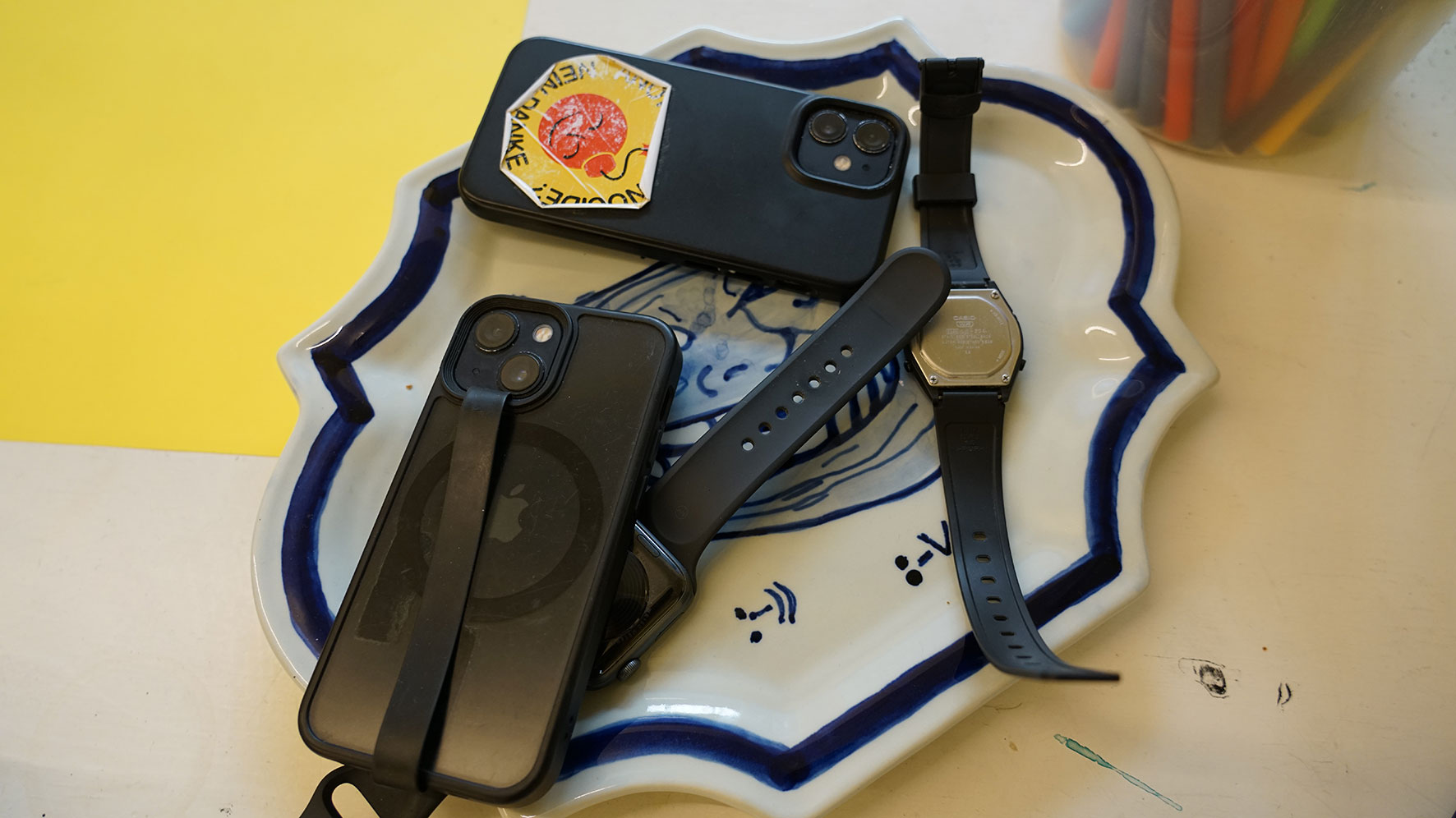
Only that two weeks from now, it is already 2025 and this time travel intro reads to those of us conditioned in linear time like someone forgot to edit and smooth out the verbs.
During out time together, we asked: What if crip time was not just something that was always with us in the ways that our disabled bodyminds meet the world, but also a collective layer of temporality and experience that we could invite others to tap into? We called this layer a crip time ocean, and we developed steering wheels for navigating its currents. Steering wheels came in many forms – from tooth brushes that ask 3 minute performances of their users to hacked wristwatches and rituals to hide your clocks. A workshop script emerged, and in June 2024, we shared our steering wheels during a day in Amsterdam and online that we named Criptastic Hack Meeting: Riding / Snorkeling / Surfing and Burrowing into Time Undercurrents.
Now, a year later, Ren and Iz are logging in and sharing where we are in time.
Logging in from Ren:
What time is it?
In calendar time its March 11th 2025, eight months after our “Criptastic Hack Meeting: Riding / Snorkeling / Surfing and Burrowing into Time Undercurrents”, about five minutes before my lips get so dry I need to go and get some chapstick and its been 4 hours since I called one of my best friends and we debated when we will know if its time to stop trying to go back to the country that has been shredding our trans* community’s passports. JOMO, joy of missing out, is only possible to log into when its not FMO, forced missing out.
In our Criptastic Hack Meeting we came together to play. Play, a kind of hacking of normative space that allows for crip queerness and a re-centering approach of our non-normative bodies and minds — a play that allows for the pressures of the world around us to lessen and for the logging on — or not — to resist temporal demands.
These days I regularly feel like I’m running out of time. Before Donald Trump’s inauguration there was a massive push by US American trans*people to “correct” state documents with our names and gender markers. In the push, there was a pileup - a pileup of bodies, documents, court dates and stress which ultimately meant that many things got pushed through - and many didn’t. Simultaneously the notion of what “correct” means can be thrown into question — correct for me or for who will evaluate my suitedness for the category marked on my documents? With what space-timely authority is our correctness in gendered infrastructures assessed?
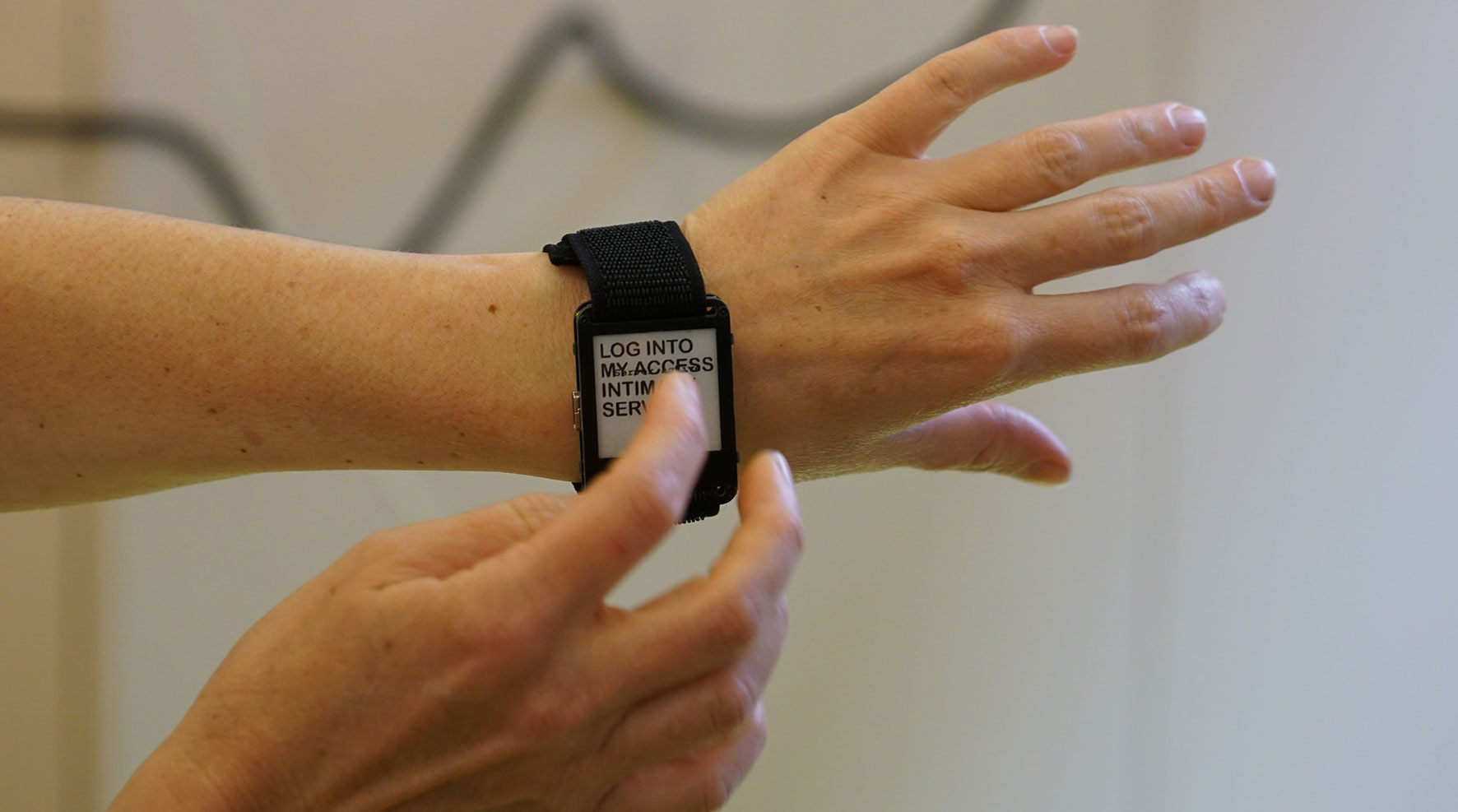
I didn’t make the cut and years of group organizing with our little cross nation state name and gender change support group felt like it was for naught. All of the energy we put into affirming ourselves, pushing beyond our self-silencing, all of the “no no, I don’t need that” — all of the internalized ableism and anti-queer sentiment we have sucked in, so it is so hard to feel empowered in centering our name and gender needs. We resisted this, we pushed back against it and in about two and a half years of regularly meeting, one of us changed their gender marker only in their passport (forget all the rest of the documents), I got my name and gender marker order through the court — only to have my right to change it on my passport and other state documents - revoked, and one of us still hasn’t taken any steps “I’ll do mine when yours is over, I’m sure it’ll be easier” — will it?
In this way, the current paradigm of a full-scale attack on gender variant and trans*people in the United States is akin to how John Lee Clark speaks about access: nonreciprocal assimilation - death by fitting in, or death by failing to fit in. Ableist white supremacy renders us out of options, when this is the only worlding: there is no other option, we are out of time.
On June 22, 2024 - we weren’t out of time. We practiced, NOT being out of time. We resisted the ways in which white cis-heteronormative non-disabled time proposes times — and we were like — nah fuck that. Crip time proposes that even now, though I’m quite pessimistic about it, we and I still aren’t out of time. It depends on whose clock you are attending to. In Rasheedah Phillips’ work “Dismantling the Master’s Clock(work) Universe: Enter Afrofuturism” they speak about “natural time and environmental cycles which have been abstracted and overthrown by Western linear time towards orientations facilitated by clocks, schedules, cell phones and digital calendars”. They continue that due to the belief that the end is seemingly always near in Judeo-Christian cultures, like western cultures in Europe and the US — time must be tightly regulated. By serving the interests of imperial frameworks, let us not forget some of the contexts our workshop touches upon: the present-day Kingdom of the Netherlands including subdivisions of Aruba, Curaçao, Bonaire and Sint Maarten; Germany and its former colonies and the present-day United States and its ongoing territories who are not sovereign entities and its ongoing settler colonial fantasies and presents. When we think about making clock time, present day time and future time, we are talking about making the future predictable and controlled. This act serves the imperial interests of the countries we live in and are regulated by. Clock time serves imperial time.
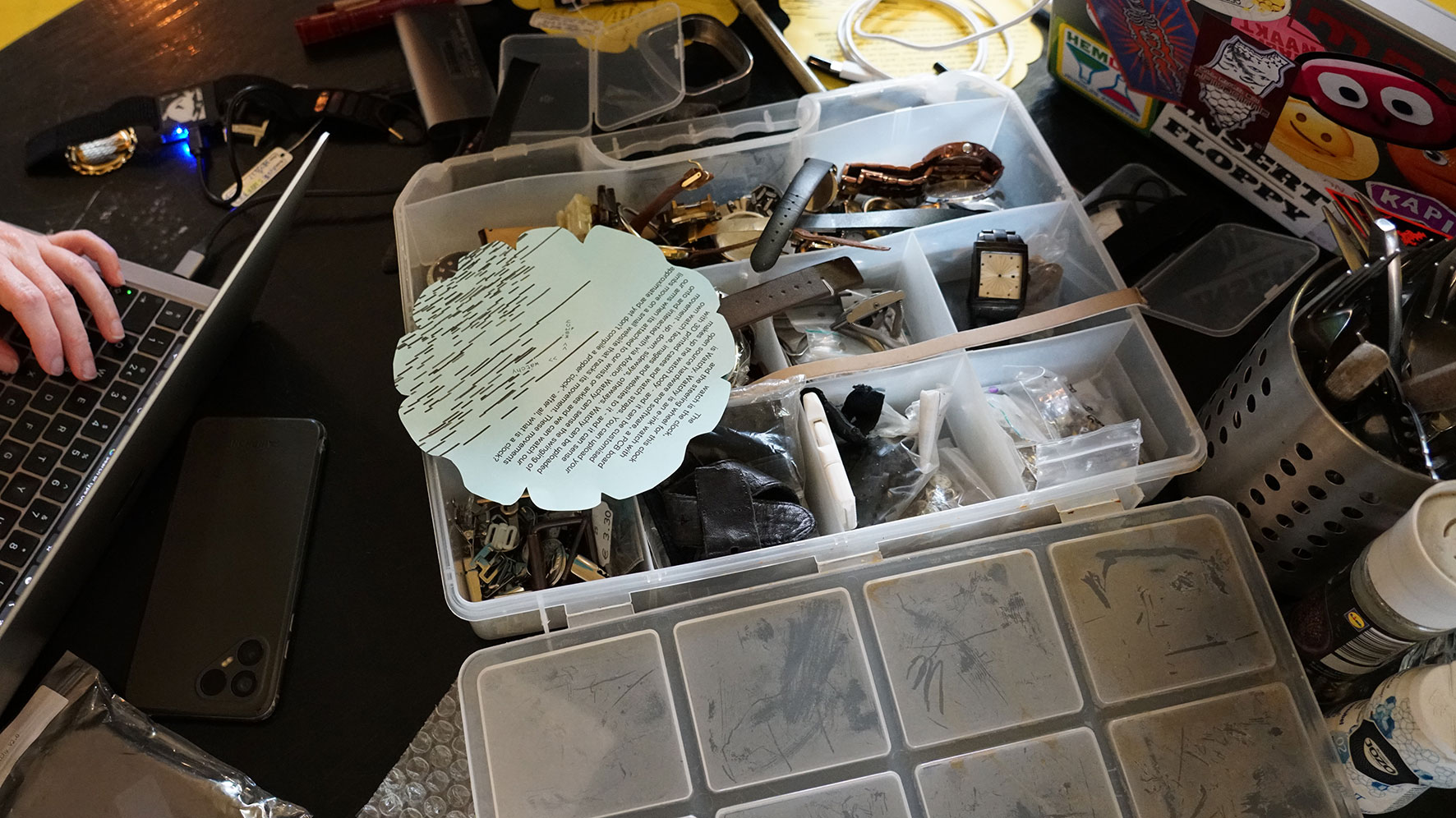
Rendering us as out of time happens when we are rendered in time as excessive. Having a body with needs, in late stage capitalism - is excessive. Resisting this requires unlearning the excessive stresses of ableist thought and rehearsed infrastructural practice that is normalized as though that is “how it is”. Time politics are imperial politics are capitalist politics. Time undercurrents refuse this, through trans*feminist disability justice body politics that unmake any needs as always already “too much”. Something is considered too much time or untimely only when the watch is set to imperial capitalist time - it indeed is hard to find spaces outside of this.
Timelines for refusing deadlines, as T.L. Cowan & Jas Rault speak about in Heavy Processing — they discuss how when you are in process heavy work - requesting extensions and dismissing deadlines can be a trans*feminist crip method of space and access making. On and offline, re-orienting time towards ways of knowing space/place that do not continue to uphold imperial time - other scholars like Aimi Hamraie have considered organizing classrooms and work time by the season or the moon, when we started developing our collaboration, Pernilla, brought a plastic case full of watch bits and some pieces of magic, another way to break time apart is literally to break it — to carry it around in its pieces and look at the parts - considering what collaging of new ways of arranging and keeping the violent tick-tocking parts that relate to regulation - apart. Rather inviting timelines that relate to personal and community experience — in. Another way of telling the time is lag time, community time. Our colleagues at Constant started working on getting automatic closed captions to work on open-source program Big Blue Button. Surely a lot of collective effort has been put into making these captions work (or not). The undercurrents of time surfed to sensitize our community and devote time and resources to making an open-source version of something work, even if not perfectly - yet - at that time.
The time to move from here to there, or here to where is still being told. And in our workshop, we told time differently to find other timelines and other access points to a way of telling time we could all be in.
logging in from Iz: tense, now
tense is a form of a verb which tells you when
tense is the feeling that stretches while the news speaker says
the political situation is
when my grandmother is proven wrong in her grave
there will never be war in Europe again while it has been
3 years 2 months 2 weeks 6 days and nights stretch like
silence that hides bombs that spin clock-wise and break time
a tense vowel is the “oo” sound in “food” (/uː/)
say food without “oo” and you get the sound of a last breath
in Palestine will is a future tense who gets to write one
tense is a form of a verb is the form of a body
war is not a tense, was is,
tense vowels turn solidarity into verb-eration
t-e-n-s-econds is what it takes to turn silence into
the “ay” sound in “say” (/eɪ/)
the “ow” sound in “now” (/aʊ/)
Visit the H&D website for complete documentation
𐔌 ﹒ ⋆ ꩜ ⋆ 𓂃 ₊ ⊹
Sounds from Earth
dianaband & Heeju
Sounds from Earth is a role-playing exercise and workshop that uses networked electronics to imagine connections and relationships with various beings, create characters and stories, and build a world. To encompass the different layers of existence and relationships, in this workshop we paid attention to the network of connections made of sound and vibration, and shared a worldview in which the wind touches all relationships. Initiated by Hackers & Designers, dianaband, and Heeju. Sounds from the Earth took place several times in Seoul and Amsterdam in 2024. For this bulletin, we reached back out to dianaband (Wonjung and Dooho) and Heeju, from which arose the following text.
~~~ Introduction (as if on the radio)
Hi friends, we’re dianaband and Heeju from the workshop “Sounds from Earth” that we did with H&D last year. Good to see you all. (o)
Last September, H&D came to South Korea, stayed with us, and in November, we went to the Netherlands to stay with H&D. And we did workshops on both sides. We shared our places of stay, our favourite restaurants and snacks, introduced our favourite friends and spaces, and got to know each other, building and sharing sound-based imaginations of the planet we live on, although we are far away from each other. Using moving objects that are wirelessly networked and sensors that detect the wind, we were able to unfold our dreams with sound. It was a time of discovery, empathy, and solidarity, and it was very important for us to spend time together in preparation for the workshop, during the workshop, and beyond.
What follows, are a drawings and texts by Heeju and an image Wonjung made, to capture the impressions that this happening left in their hearts. Heeju mapped the network of relationships with people, places and things that we built during the time of the project and Wonjung collected the sounds heard during the workshop at the Bottle Factory, a zero waste community and café in Seoul.
It was so happy with you all! See you next time~ Bye!! Doei! Au revoir!! Dooho
o
o
o
o
。
。
.
.
.
.
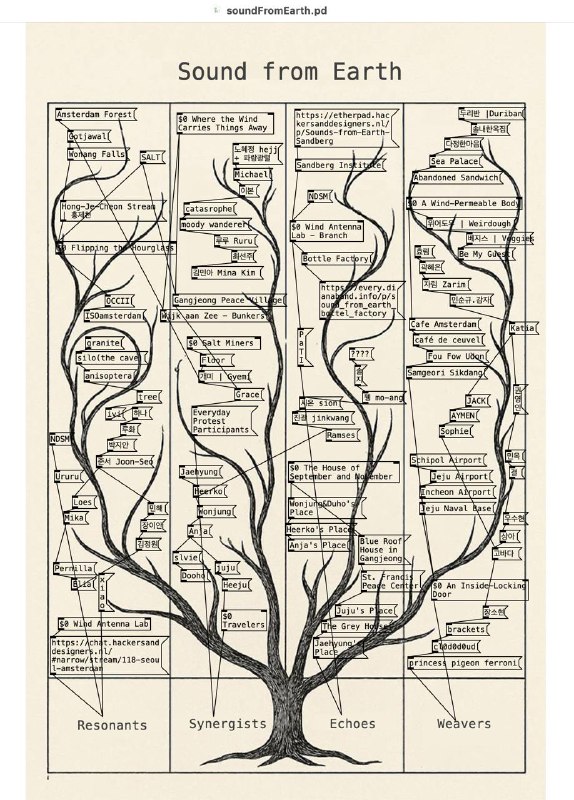
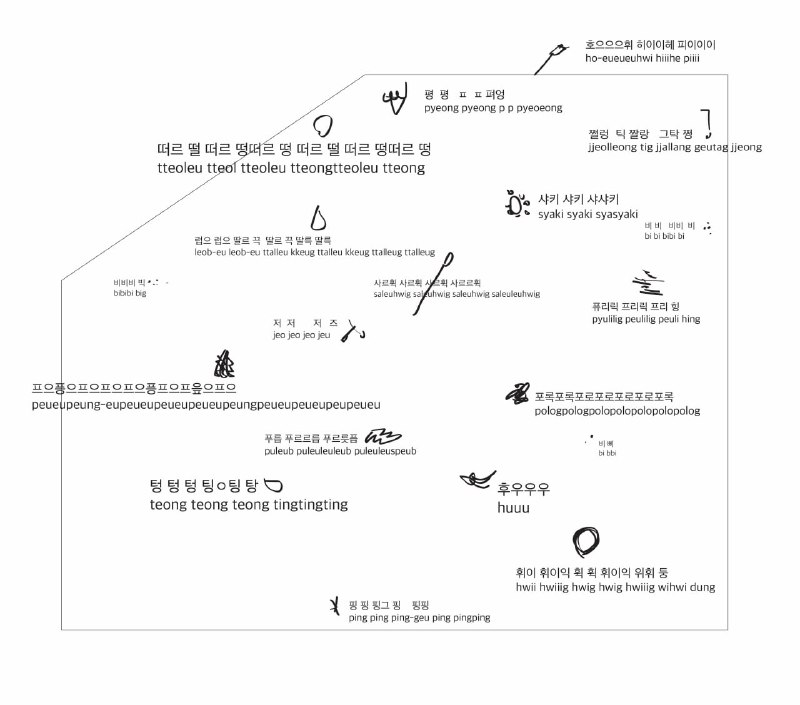
One day, the four of us — Wonjung, Dooho, Heeju, and Jaehyung — gathered to look back on Sound from Earth as it unfolded in September and again in November. Wonjung spoke about “names” and “faces,” and I lingered there with her words, trying to summon each face that belonged to a name. Some faces had no name; some names, no face. To certain names clung the feel of late-summer clothes against the skin; to others, the scent of an unexpected rain shower. One name is still marching with a flag. Another tastes of noodles and Makgeolli (rice wine), another of soup and sandwiches.
As I retraced our memories, the places, actions, missions, functions, emotions, temperatures, languages, and times bound to each name all blurred together. Time and space, once separated, met with the crisp clap of two palms coming together. The two palms do not share the same tense: a nearer past meets a more distant one. On each palm flickers a portal — like the bubbling blue flame you sometimes stumble upon inside a game. Guided by that flat ‘chak’ sound of contact, I sorted the names once more, using the four classes of Residents, the characters we first imagined when we created Sound from Earth, part LARP workshop part prototyping workshop:
- Flipping the Hourglass — places residents visit to
decipher messages on the wind, where time runs along a different
course.
- Wind Antenna Lab — the laboratory that studies this
undertaking, sketching out residents’ roles and the architecture of
their Symbiotic Companions.
- Wind Antenna Lab — Branch – outposts beyond the
main lab that recruit new residents and broadcast the wind’s messages
far and wide.
- Where the Wind Carries Things Away — places we
chance upon that reside on another timeline altogether.
- Salt Miners – guides who lead travelers toward
“Where the Wind Carries Things Away.”
- Travelers — drifters who follow wind and sound; though affiliated with the lab, they live their daily lives wherever they happen to be.
- The House of September and November — a provisional
home we inhabited only during those two months
- A Wind-Permeable Body — people sitting in a circle,
mouths open, letting the wind course through their bodies.
- An Inside-Locking Door — a door that, once you step through it, allows passage only in one direction.
This figure is a map of the sounds and vibrations that inhabited the Bottle Factory at the time of the workshop, to express the impression of the workshop space. The sounds were like ‘forest spirits’ and we were trying to listen to them. The size of the letters reflects the size of the sounds!
huuuu, saleuhwig saleuhwig saleuhwig saleuleuhwig, ho-eueueuhwi hiiihe piiii these three are companions who can listen the subtle vibrations of the wind, and they inform other beings of the state of the wind through a network. saleuhwig saleuhwig saleuhwig saleuleuhwig is in the form of a wand that can create wind as an active act, ho-eueueuhwi hiiihe piiii is like a palm that listens to the vibrations of the outside wind, and huuuu is a circle that listens to the sounds and vibrations of messages or wishes.
In the workshop, we imagined and created Echos, who spread the sound and stories of the wind, and Weavers friends who weave the structure and order of the wind, and they are influenced by three types of wind, producing sound and vibration. For a while we stayed and walked around listening to the sounds and movements of the world. And then, saddened by the rumor that the wind had stopped, we performed a ritual of conveying our sobs and wishes through huuu.
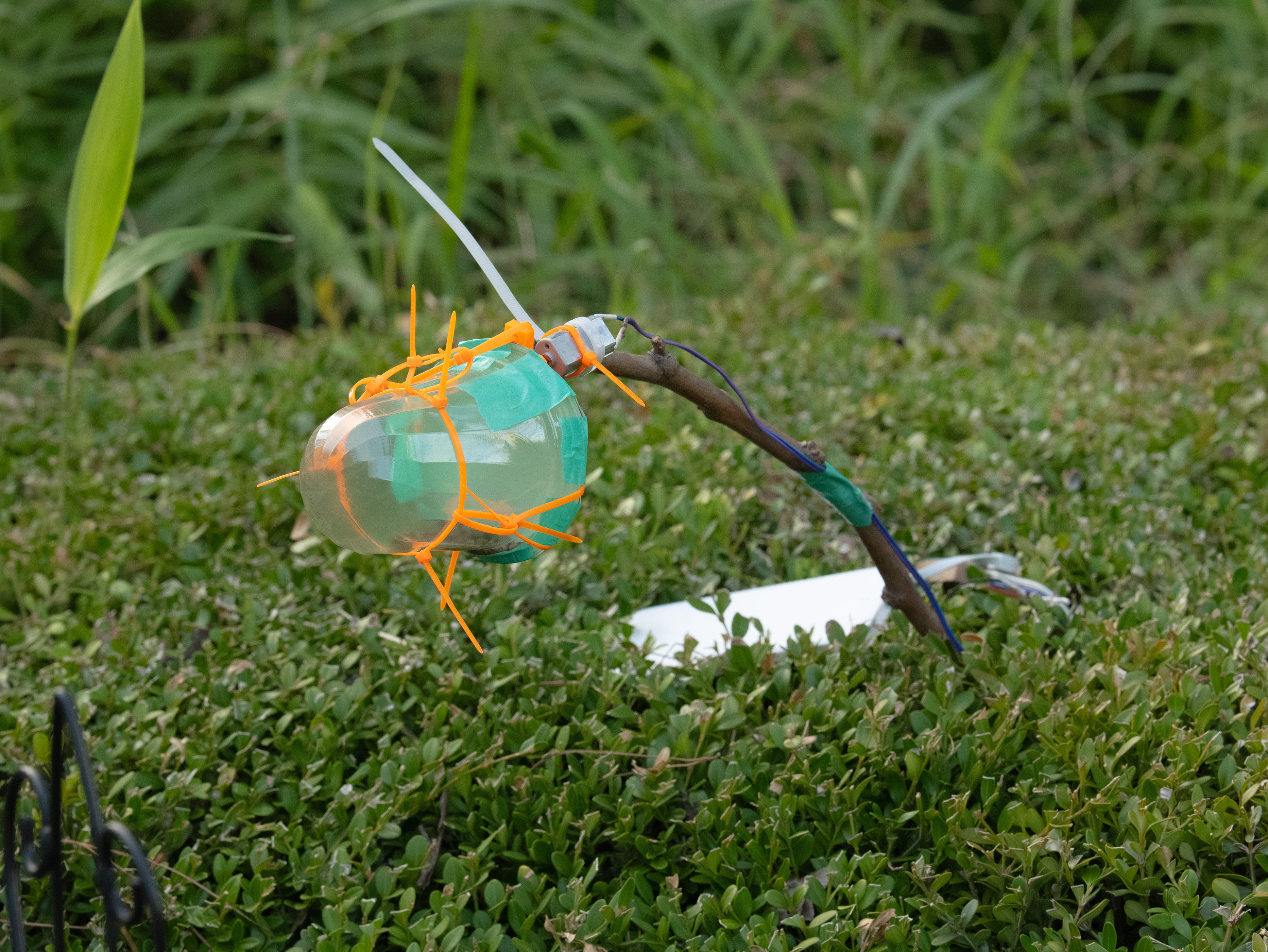
𐔌 ﹒ ⋆ ꩜ ⋆ 𓂃 ₊ ⊹
An-Mitan: Technology, Ancestry, and Inter-Island Resilience
Michèle Boulogne
Alongside Waag Futurelab and Framer Framed, H&D is part of a so-called AFK 3PackageDeal (https://www.amsterdamsfondsvoordekunst.nl/ fondsinitiatieven/3package-deal/) coalition. The 3PackageDeal offers fifteen artists a year of mediation in affordable living and working space, a development budget, coaching and a network of Amsterdam organizations. It is within this context, that we have been working with Michèle Boulogne, a visual artist and textile designer from Martinique. For this contribution to this bulletin we ask Michèle about their work and explore our mutual interests and concerns when it comes to technology.
[…] Since starting my independent practice in 2021, I have moved between the cultural side of the space sector and my personal work in textiles and visual arts…Today a wide part of my practice explores the visual and material histories of spatial sciences: astronomy, cartography, and the recording of ecosystems or phenomena considered too distant or vast to fully grasp. To give you some examples, I have translated NASA radar imagery of the Venusian surface into knitted pieces, explored historical explorative parallels between the Caribbean and Outer Space as New Worlds for the Occident, and written about their shared futures and challenges. I was recently asked to prepare experiments on the Earth’s magnetic field as a sensorial organ and how it connects us to the Sun (I can’t say much more just yet!).
In the following, I will share reflections that emerged while navigating the highly technological world of space systems, the cultural and academic context of visual arts, and the reality of life itself as a Martinican. These concepts also inform a publication I am preparing about connections between Caribbean islands, especially between the neighboring Martinique and Dominica.
Paris, 2024, during a conference I attended, a project manager overseeing the development of a closed-loop ecosystem in space for food growth was asked: “There is still so little we know about the living. How are these uncertainties accounted for within the confines of a space station experiment?” (the mission components were bacteria, algae, plants, and chemical elements). The response was unequivocal: “There are no uncertainties, and we cannot and will not allow them.” Part of me might understand the importance of putting on a confident front, that no errors are to be granted in space endeavors, while so much is at stake. Yet another part cannot agree with the false impression that we are able to fully control ecosystems, and that continuing blindly might be the best approach.
A few months later in Milan, at the International Astronautical Congress. I attended a workshop,“Space supporting a World of 8 Billion People,” focused on how data production can serve a sustainable future. Part of the discussion was around large-scale natural disaster mitigation, and how sharper algorithms can help monitoring, preventing and reacting to them. This is some of the most fascinating and important use of outer space data today, yet I ended up raising my hand after witnessing a two-hour discussion that mentioned no interaction with the people on ground, and no solutions of access or retrieval to local experts. There was no mention of already lived experience nor scenarios involving electricity shortages or communication isolation. But how can we make sure we can use these tools when needed most? Who are they serving exactly? Are they built on the certainty that Europe and the US and its historically stable grounds, will always be there to feed this information back to the ones who need it? To me, it is a missed opportunity to not implement these scenarios.
These are just two examples among many that have led me to reflect on how today’s technological systems are designed; ones that, as we develop and deploy them, seem increasingly unable to attune to a ground reality because they are built from a framework of ideal predictability, and maximized efficiency. When I ask whether technology lacks attunement or space for doubt, I am not speaking of machines or tools in themselves. I am speaking of the systems of thought and design that shape how we conceive, build, and relate to them. It is not technology that resists openness, but the intellectual and institutional frameworks that surround its creation: frameworks that reward mastery and linear progress. These systems leave little room for the relational, the unknowable, or the reverence that complexity demands. Many contemporary technical visions exclude the question of breakdown, of end of life, of access by those most affected. What is absent is not intelligence, but a way of thinking that holds space for the sacred, the unresolved, and the interdependent.
I wonder how we can foster that space where uncertainty, humility, and re-evaluation live: a space often treated as a weakness in most technical systems, especially in high-risk environments like aerospace or climate data management. So, I am asking and would love to hear your thoughts about this: Does technology lack spirituality? Without this gap for error, humility, and the unknown, technological systems grow increasingly fragile while we rely on them more and more. They become brittle, optimized for best-case scenarios, but incapable of adapting gracefully to real-world crises. This brittleness reflects what I perceive as a spiritual fracture, and in that fracture lies a field of potential, relationality, and learning. It is not a gap of intelligence; it is a gap of ethics, imagination, and resilience. In that sense, technology cannot be just an instrument. It is now a mode of being, and if left unquestioned, it misses a step and deepens alienation.
An-Mitan: Space and Resilience between Islands
These reflections on global systems have not remained abstract. In September 2017, one of the most violent hurricanes to ever hit the Caribbean made landfall in Dominica. Maria, as a Category 5 hurricane with winds up to 280 km/h, will then head towards the Virgin Islands before ending its path in Puerto Rico. The consequences were proportionally disastrous and deadly. In the midst of climate change, there is an urgency in reshaping regional ties, and this is an experiment to understand the role of the cultural fields in doing so.
My experience navigating the mapping and space sectors as a creative has directly shaped how I understand my home region, the Caribbean. It has also enriched my discussions with my family and friends around dinner tables. From this came a collaborative publishing project with my mother, Marie-line Mouriesse Boulogne, who is a writer, anthropologist, and teacher of history and geography. Together we are crafting an invitation to reflect on a Caribbean project for today and tomorrow: how do we want to be in the world, both in our Caribbean and for the world? This series of writings and visuals is an invitation to a new centrality in opposition to a fragmented and dissociated vision of our current region.
As of today, most of us Caribbean people have roots in an elsewhere, whether it be an African, European, Indian, Chinese, or Syrian elsewhere. However, solely identifying ourselves away can prevent us from perceiving ourselves as fully an mitan, Creole for centered on our soil. It is in this sense that this work invites us to build another centrality, as a common ground that brings us together instead of dividing us. Even if this ground has been a place of violence and oppression, adopted and foreign to us, it is today a home, a shared soil, and a shared culture. The first gesture of An Mitan is a reaction to the disregarded presence and resilience of Kalinago Natives on the Caribbean soils. Coming from this angle, it only felt natural to start this initiative within our neighboring islands, the one that needed our help after Maria, and the Kalinago Territory : the last official native communal land on the east coast of the island.
In order to hold this conversation, we are investing in the tools, events, and technological frameworks that have both connected or disconnected us between islands and fra om ancestral knowledge rooted in the archipelago itself. What tied me to Kalinago ancestry, as textile practitioner, is the will to learn the traditional basket weaving and understand which plants, mud and technics have been historically used on the windward islands. I started my apprenticeship in Martinique, and pursued it Dominica.
The makingof An-Mitan: Space and Resilience between Islands explores the oral, visual and material envelope of this shared knowledge. Together with textile practices of weaving and dyeing, it seeks inter-island solutions regarding agricultural climate resilience. We are studying landslide mitigation, food autonomy, communal land systems, architecture, hurricane mitigation, and rising sea levels. These may seem like many thematics, but we realized that we can not speak about one without the others, as they are part of a whole. So, how can we make this knowledge thrive? How can it thrive and survive within us and for us? This first work, as a memoir of our personal link with the Kalinago territory, has led to the development of a cultural, artistic, political, and philosophical project. More fundamentally, it invites us to a new ontology: building a rooted being in the world rather than an uprooted being in the world. Our community resilience, whether cultural or technological, is interdependent with this ancestry and must be an integral part of our Caribbean project for today and tomorrow.
𐔌 ﹒ ⋆ ꩜ ⋆ 𓂃 ₊ ⊹
Soft and Seamful
Hackers & Designers was invited to join the collection of The Palace of Typographic Masonry for an exhibition at the Museum Angewandte Kunst in Frankfurt which took place from 22 February till 11 May 2025.
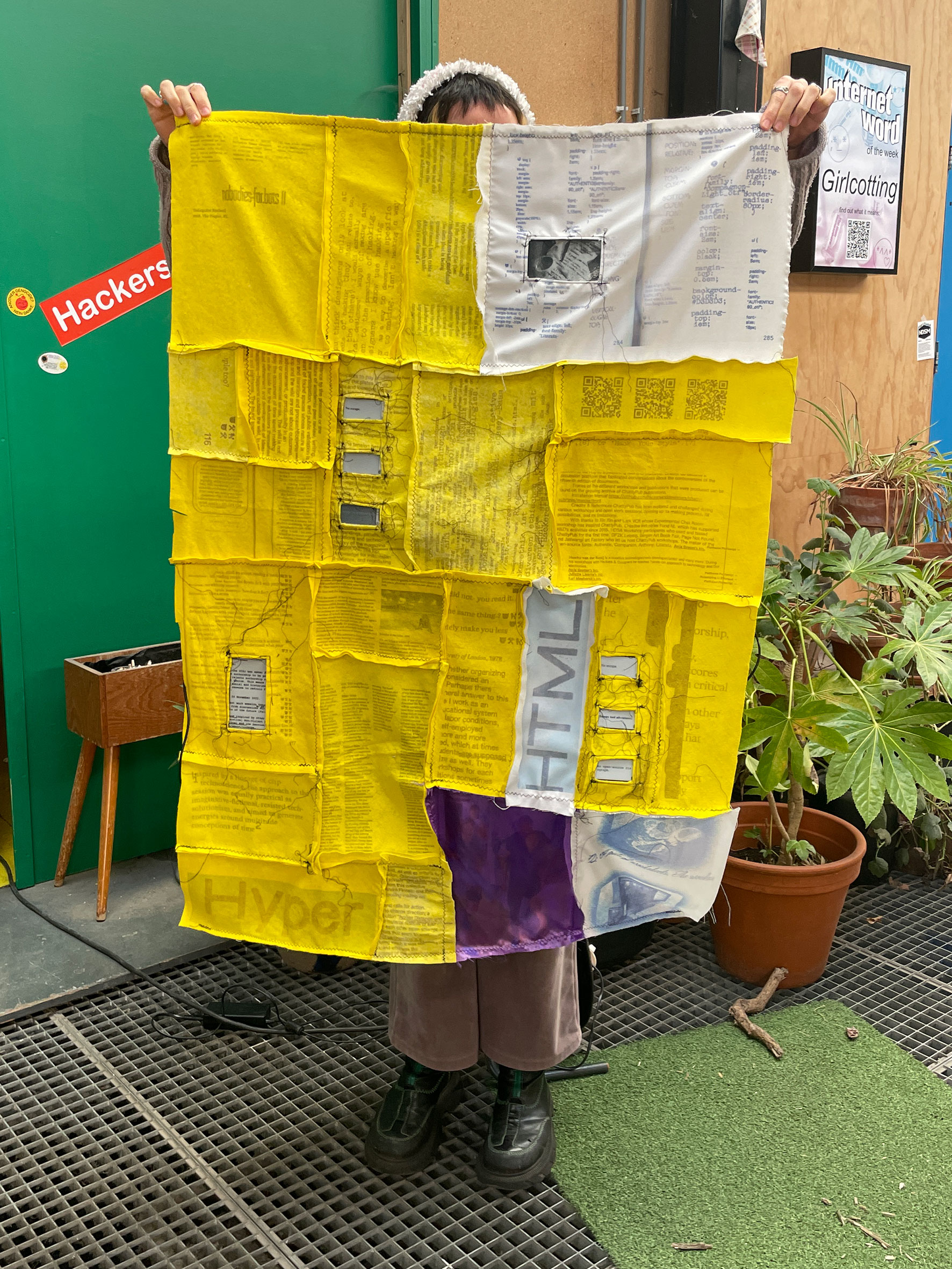
This “seamful” textile poster is a counter proposition to the impersonal techno-slick aesthetics that trick you in believing that software is neutral and ‘just works’. The hand-sewn patchwork highlights the ‘seams’ of technology, using repurposed fabrics, charming mistakes, slight imperfections and quirky glitches sourced from H&D’s self-published zines and books. H&D’s designs its publications with self-built design tools, shared under free software licenses, allowing anyone to access, manipulate and redistribute their source code. Free/libre open-source design software enables users to design, study, customize, and reshape the tools themselves. Visitors were invited to share their thoughts on “seamful design” by connecting to the WiFi modules sewn into the fabric. Scanning a QR code grants access to one of three local WiFi networks, leading to a pop-up website with a prompt. Submitted messages appeared on the e-ink screens.
The effortless experience of using commercial design tools—also known as proprietary software or the Adobe octopus, the ‘Swiss Army knife’ of desktop publishing—comes at a price. That seamless, intuitive workflow? It might be an illusion, a clever disguise hiding the software’s inner workings. What about the unseen restrictions? The quiet dependencies that tether you to specific tools? Ask yourself: How much control do you really have over the software shaping your work—and how deeply do you understand it and the outcomes it produces?

Free/Libre open-source design tools may feel less intuitive than their commercial counterparts. They are “open” and free to use, but they also demand a certain level of openness and curiosity from the designer to navigate potential turbulences. Free/libre open-source design software allows for the tools themselves to be designed, studied, copied and manipulated. What does openness mean to you and how does it influence creativity and agency in your work?
・⋆.‧₊˚Collective tool ecologies˚⋆。‧₊˚
Commercial design tools assume linear and individualized design processes, increasing productivity through preprogrammed features that streamline tasks to be completed in a frictionless linear manner, one step at a time. Let’s instead imagine design tools unconstrained and as part of networks of social and technical relationships. Let’s challenge the prevailing “frictionless” design model, and shift the focus from productivity and “software as a service” to viewing free/libre open-source design as a joyful, “inefficient” process driven by collective exploration.
The Palace of Typographic Masonry is a project initiated in 2014 by the Dutch graphic designer Richard Niessen as an imaginary architecture devoted entirely to the variety, abundance, digressions and poetry of graphic expression. The Palace of Typographic Masonry at Museum Angewandte Kunst in Frankfurt provides a multi-layered insight into the creative discipline of graphic design: From the fundamentals of the trade and their interplay in compositions and designs to tools, techniques, and conceptual approaches to the professional practice in the shifting sphere of space, time, clients and audiences.
The travelling exhibition showcases graphic design as a poetic and visual force with the ability to shape culture and channel political messages to convey social values and ideals. Contributions are by Juan Luis Blanco, Benjamin McMillan, Edgar Walthert, Victoria Hoogstoël, Bart de Baets, Team Thursday, Rietlanden Women’s Office, rndr, Alex Walker, Cleo Tsw, Lukas Engelhardt, Jan Egbers & Justus Gelberg, Richard Niessen, Esther de Vries, Meeus ontwerpt, Harmen Liemburg, Studio Moniker, Rudy Guedj, Joost Grootens, Hackers & Designers, Farah Fayyad, Ott Metusula, William Jacobson, Metahaven, Maureen Mooren and fanfare.
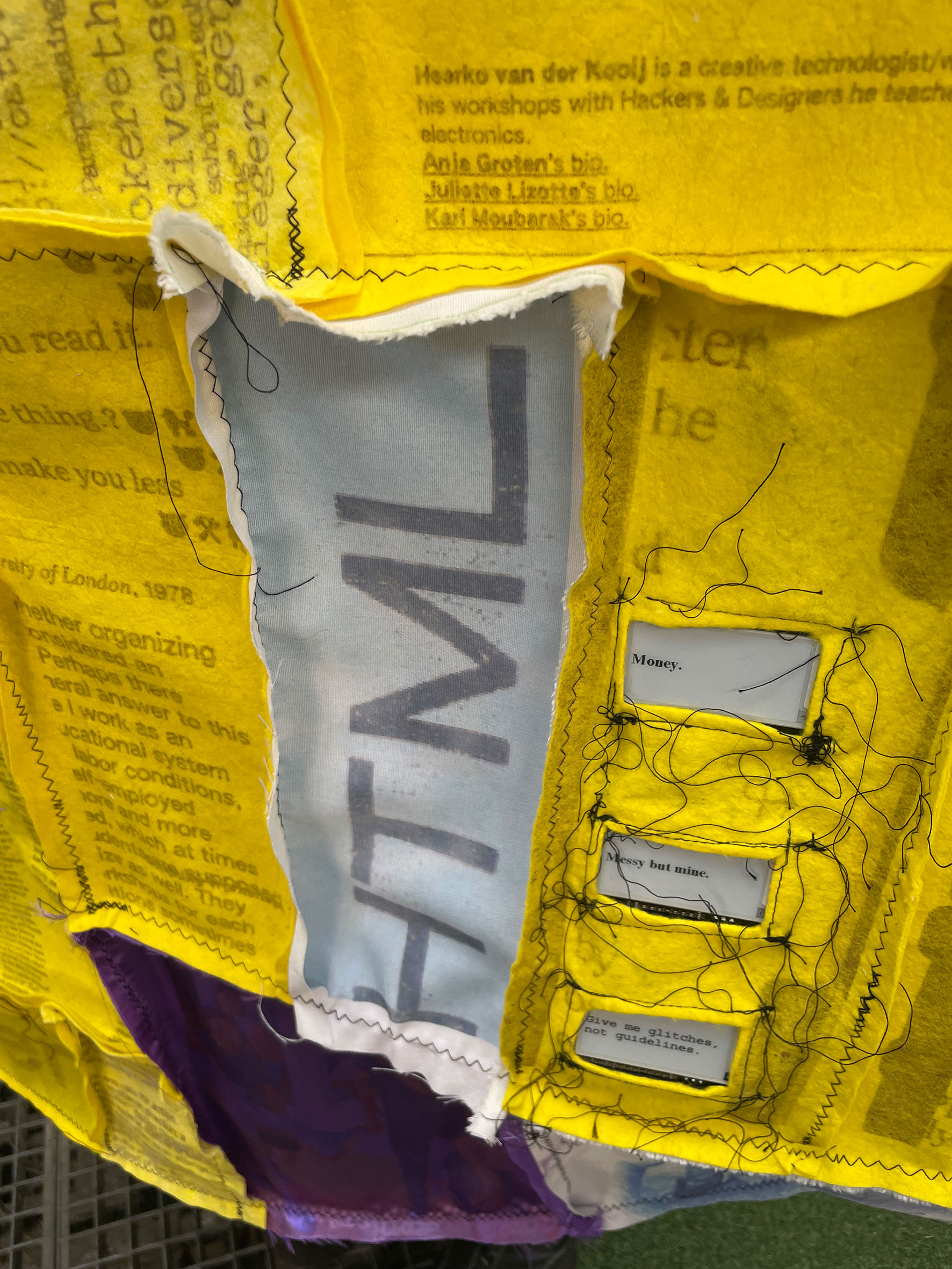
𐔌 ﹒ ⋆ ꩜ ⋆ 𓂃 ₊ ⊹
Octomode and Learning Palestine
Here is an introduction from the Learning Palestine website about their initiative:
We are a group of artists, academics, intellectuals and community members, who aim to disseminate knowledge on the history of the ongoing struggle for justice, liberation, and freedom of Palestine and the Palestinian People. We wish to practice new and old ways of disseminating this knowledge, that function out with the constrains of social media and corporate controlled networks.
https://learningpalestine.net/
At this point Learning Palestine relies on design software (Adoble InDesign and Acrobat), which – like so many other BIG TECH projects – is complicit in the genocidal war on Palestine by spreading misinformation about it, and ultimately profiting from it. In our first meeting we discussed several libre/open-source and web-to-print possibilties that we had explored in the past, such as Wiki4Print, ChattyPub, Etherport. Eventually Octomode seemed an interesting layouting alternative for Learning Palestine.
This bulletin was also designed with Octomode, a collective editing space for PDF making that uses Etherpad, Paged.js, and Flask. It was developed by our friends at Varia. Varia is a Rotterdam-based collective and space for developing collective approaches to everyday technology. Here is how they describe Octomode:
“Inspired by the non-centralized, tentacular cognition capabilities of the octopus, we imagined a space in which the artificial boundaries of writing and designing can be crossed; where writing, editing, and designing can be done in one environment simultaneously, allowing the format to influence the matter and vice-versa.”
Thus, Octomode is free/libre open-source software and can be used by multiple people simultaneously. People can write, edit, and design together in real time. From our experience using Octomode or – and Etherpads more generally – during H&D workshops, this enables exciting dynamics and opens up space for collective making and learning. We imagine Octomode working well for translation and design sprints in the context of Learning Palestine, who are always looking for support to translate relevant readings to different languages and to design and distribute more zines.
We also liked the idea of continuing and contributing to a tool that has been developed by our friends from Varia who support the Palestinian cause and advocate for Anti-Colonial Tech. As H&D we considered the request from Learning Palestine as an opportunity to contribute to this community-driven tool by reinstalling it on our server, using it again but also by improving it and adding features… and perhaps by documenting how to use it for less technophile folks in the future. We hope this Octomode instance will be a way for Learning Palestine to move away from the expensive proprietary black box software and becoming a space for learning about other ways of designing together. In the online documentation of Octomode, we saw a list of possible improvements that we wanted to try and tackle while working on adapting the tool for Learning Palestine.
Some features we were able to include:
- Removed the confusing dropdown styling menu in Etherpad, which was difficult to integrate with Paged.js. The idea is to rely solely on Markdown, provide a Markdown syntax guide, and keep formatting consistently.
- Reintroduced a table of contents in Etherpad for easier navigation during editing, based on Markdown formatting. Normally, the table of contents in Etherpad is generated using the styling dropdown, but this approach builds directly on Markdown instead.
- An imposition button!!! This was the most exciting feature for us. At H&D, we make a lot of zines, and one ongoing challenge has been correctly shuffling pages before printing and binding. We used to do this in Adobe Acrobat, which was frustrating—having to return to proprietary software at the final stage of an otherwise open-source workflow. With this new feature, we can export a PDF that is ready for double-sided printing and stapling, eliminating the need for that extra step.
Consider downloading, printing and distributing Learning Palestine zines: https://learningpalestine.hotglue.me/?Pamphlets
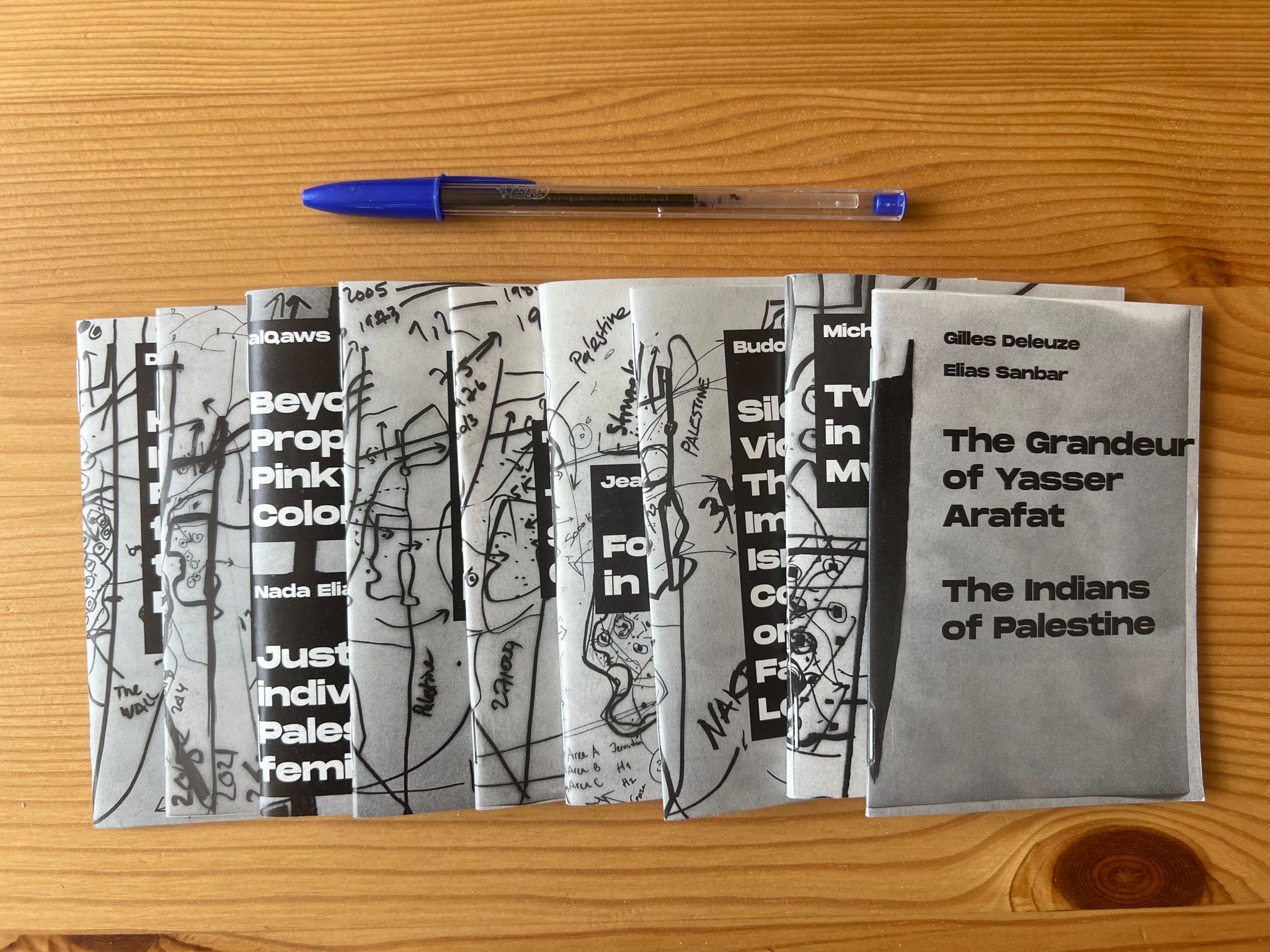
𐔌 ﹒ ⋆ ꩜ ⋆ 𓂃 ₊ ⊹
Colophon
- Contributors: Michèle Boulogne, dianaband &
Heeju, Iz Paehr & Ren Loren Britton.
- Editing: Loes Bogers and slvi.e
- Design: Juliette Lizotte, Anja Groten and slvi.e
- Typefaces: BackOut by Frank Adebiaye, with the contribution of Ariel Martín Pérez and a series of typefaces found on the Bye Bye Binary’s Typotheque (https://typotheque.genderfluid.space): Amiamie by Mirat Masson, BBBManifont by Soophie Vela, Max Lillo, et al., BBB Baskervvol by Bye Bye Binary et al., Insolente by Marie Godefroy. Since 2018, the Bye Bye Binary collective has been actively working on the design of post-binary fonts to enable the language to move beyond the debates around inclusive writing.
- Printing: no kiss, Amsterdam
- Tool: This bulletin has been designed with Octomode, a collective editing space for PDF making, using Etherpad, Paged.js, and Flask developed by our friends at Varia.
COLLECTIVE CONDITIONS FOR RE-USE (CC4r) Hackers & Designers, 2025. Copyleft with a difference: This is a collective work, you are invited to copy, distribute, and modify it under the terms of the CC4r.
REMINDER TO CURRENT AND FUTURE AUTHORS: The authored work released under the CC4r was never yours to begin with. The CC4r considers authorship to be part of a collective cultural effort and rejects authorship as ownership derived from individual genius. This means recognizing that it is situated in social and historical conditions and that there may be reasons to refrain from release and re-use.
Copyleft Attitude with a difference, 24 November 2022.
The CC4r was developed for the Constant work session Unbound Libraries (spring 2020) and followed by discussions during and contributions to the study day Authors of the Future (Fall 2019). It is based on the Free Art License and inspired by other licensing projects such as The (Cooperative) Non-Violent Public License and the Decolonial Media license.
𐔌 ﹒ ⋆ ꩜ ⋆ 𓂃 ₊ ⊹
+--------------------------------------+ | | | Dear _____________________________ | | | | | | __________________________________ | | | | | | __________________________________ | | | | | | __________________________________ | | | | | | __________________________________ | | | | | | __________________________________ | | | | | | +-----+ | | | | | | |STAMP| | | |HERE | | | | | | | +-----+ | | | | | | | +--------------------------------------+
⡰⠀⠀⢀⡀⠀⠀⠀⠀⠀⠀⠀⠀⠀⠀⠀⠀⠀⠀⠀⠀⠀⠀⠀⠀⠀⠀⠀⣶⠄⠀⠀⠀⠀⠀⠀⠀⠀⠀⢀⣤⠀⣠⡀⠀⠈⠀ ⠀⠀⢻⠚⠋⠀⠀⠀⠀⠀⠀⠀⠀⠀⠀⠀⠀⠀⠀⠀⠀⣤⠀⠀⠀⠀⠀⠀⢸⠀⠀⠀⠀⠀⠀⠀⠀⠀⠀⠀⣿⠀⢨⡄⠀⢸⠀ ⠁⠀⠀⣦⣄⠀⠀⠀⠀⠀⣴⡀⢠⣴⣤⣀⠀⠀⠀⠀⠀⠉⠀⣀⠀⠠⣄⠀⠀⠇⣀⣤⣄⠀⢀⠀⠀⡀⣀⠀⢸⠀⣏⣻⠀⠀⠆ ⡆⠀⢰⣅⣹⠇⠀⠀⠀⠀⠈⣧⣤⣤⣬⣽⣷⣤⠀⡌⠀⠀⠀⠹⣦⣤⣥⣤⣼⣯⣥⣤⣿⣤⣼⣦⣤⣷⣼⣤⣼⣦⣭⣽⡃⠀⠐ ⠡⡀⠀⠉⠁⠀⠀⠀⠀⢀⣴⠃⠁⠈⠀⠁⠀⠁⠠⣧⣀⣀⣠⡴⢃⣩⡤⠀⠀⠀⠀⠀⠀⠀⠀⠀⠀⠀⠀⠀⠀⠀⠀⠀⠀⠀⠂ ⠀⠀⠁⠐⠄⠀⠉⠒⠚⠋⠁⠀⠔⠀⠀⠀⠀⠀⡀⠈⠉⠉⠁⠀⠈⠀⠀⠀⠀⠉⠉⠉⠀⠉⠁⠉⠉⠁⠀⠉⠈⠁⠀⠀⠉⠀⠀ ⠀⠀⠀⠀⠀⠐⠀⠤⠤⠄⠀⠁⠀⠀⠀⠀⠀⠀⠈⠀⠒⠂⠀⠉⠁⠀⠁⠀⠀⠀⠀⠀⠀⠀⠀⠀⠀⠀⠀⠀⠀⠀⠀⠀⠀⠀⠀Free Palestine <3⠀⠀⠀⠀⠀⠀⠀⠀⢀⡠⡔⠒⢺⠁⠒⡔⠒⠲⠄⠠⠤⢄⠀⠀⠀⠀⠀⠀⠀⠀ ⠀⠀⠀⠀⢀⡀⠀⠠⢎⠢⠧⠀⠘⠀⠀⢐⠀⠀⠀⠜⠀⠈⠨⢦⠀⠀⠀⠀⠀⠀ ⢀⠔⠛⠋⠀⢀⡏⢃⠀⠂⠀⠀⢠⠀⡀⢸⠀⢀⡎⠀⠠⠔⢁⡸⡀⠀⠀⠀⠀⠀ ⣸⠣⡀⢣⡄⠈⠃⠘⢦⠀⡇⢡⢺⠀⠁⢰⠀⠘⠀⠔⠁⡀⠋⣴⠤⠶⠠⡀⠀⠀ ⡆⠁⠀⠀⢩⣦⡀⠀⡘⣄⠻⣌⢢⠀⡆⡘⢠⢃⠌⡠⠊⣀⡼⠁⠀⠀⢐⣉⡄⠀ ⠘⣦⠀⣀⠀⠙⢿⣦⣝⣬⣮⣾⣿⣿⣻⣿⣷⣥⢊⡤⠮⣊⡤⠐⠁⠀⠉⠀⠈⡆ ⠀⢹⠄⢀⣁⡀⠒⣚⣛⢿⣿⣿⣿⣷⣿⣿⣿⣿⣏⡠⠐⠉⠀⡠⠶⢂⡤⠖⢈⡇ ⠀⠈⢔⠀⣀⠬⢛⠛⡉⠙⡻⠿⣿⣿⣽⣿⣿⣾⡿⣗⣒⡒⠒⠒⠈⠁⠀⠀⠀⠇ ⠀⠀⢀⡋⢀⢔⠅⠀⠠⠜⡔⠀⠄⠀⢸⠁⠉⠀⢣⠈⠂⠤⠄⡀⠈⠐⠒⡲⠊⠀ ⠀⠀⠀⢆⡁⠥⠤⠤⠠⢎⣀⣼⠄⣀⡀⡇⠓⢰⢰⠮⠵⢒⣒⣖⣨⠭⠟⠁⠀⠀ ⠀⠀⠀⠀⠈⠘⠚⠓⠤⠀⠦⠤⠰⣄⠩⠷⠒⠂⠁⠀⠀⠀⠀⠀⠀⠀⠀⠀⠀⠀ ⠀⠀⠀⠀⠀⠀⠀⠀⠀⠀⠀⠀⠀⣻⡂⠀⠀⠀⠀⠀⠀⠀⠀⠀⠀⠀⠀⠀⠀⠀ ⠀⠀⠀⠀⠀⢀⣤⢦⣤⣀⠀⠀⠀⢸⡧⠀⠀⠀⠀⠀⠀⠀⠀⠀⠀⠀⠀⠀⠀⠀ ⠀⠀⠀⠀⠀⡾⣇⡀⠈⢻⡄⠀⠀⠈⣷⠄⠀⠀⠀⠀⠀⠀⠀⠀⠀⠀⠀⠀⠀⠀ ⠀⠀⠀⢠⡾⠁⠘⡌⢢⠀⢻⡄⠀⠀⠹⣇⠀⠀⠀⠀⠀⠀⠀⠀⠀⠀⠀⠀⠀⠀ ⠀⠀⠀⣾⠀⠂⠀⠰⢸⣧⠈⣧⡀⠀⠈⢹⣇⠀⠀⠀⠀⠀⠀⠀⠀⠀⠀⠀⠀⠀ ⠀⠀⠀⡇⠁⠢⡀⠀⠞⣻⡂⠘⣧⠀⠀⠀⣻⡆⠀⠀⠀⠀⠀⠀⠀⠀⠀⠀⠀⠀ ⠀⠀⠀⢳⡉⠀⢼⠃⣩⡿⠀⠀⠘⣧⡄⠀⠘⣷⠀⠀⠀⠀⠀⠀⠀⠀⠀⠀⠀⠀ ⠀⠀⠀⠀⠙⢶⣈⣴⡿⠁⠀⠀⠀⠘⣷⠀⠀⢹⡄⠀⠀⠀⠀⠀⠀⠀⠀⠀⠀⠀ ⠀⠀⠀⠀⠀⠀⠙⠋⠁⠀⠀⠀⠀⠀⢸⠀⠀⣸⠇⠀⠀⠀⠀⠀⠀⠀⠀⠀